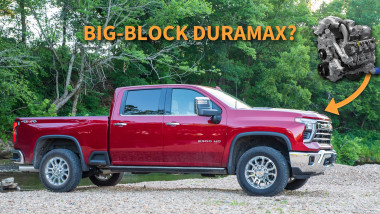Rumored 'Big-Block' Duramax Diesel Could Be 8.3L and We’re Off the Rails Now
Rumored ‘Big-Block’ Duramax Diesel Could Be 8.3L and We’re Off the Rails Now::You’d expect diesel engines to get smaller as time goes on, but recent reports claim GM’s truck power plant could grow by more than a liter.
